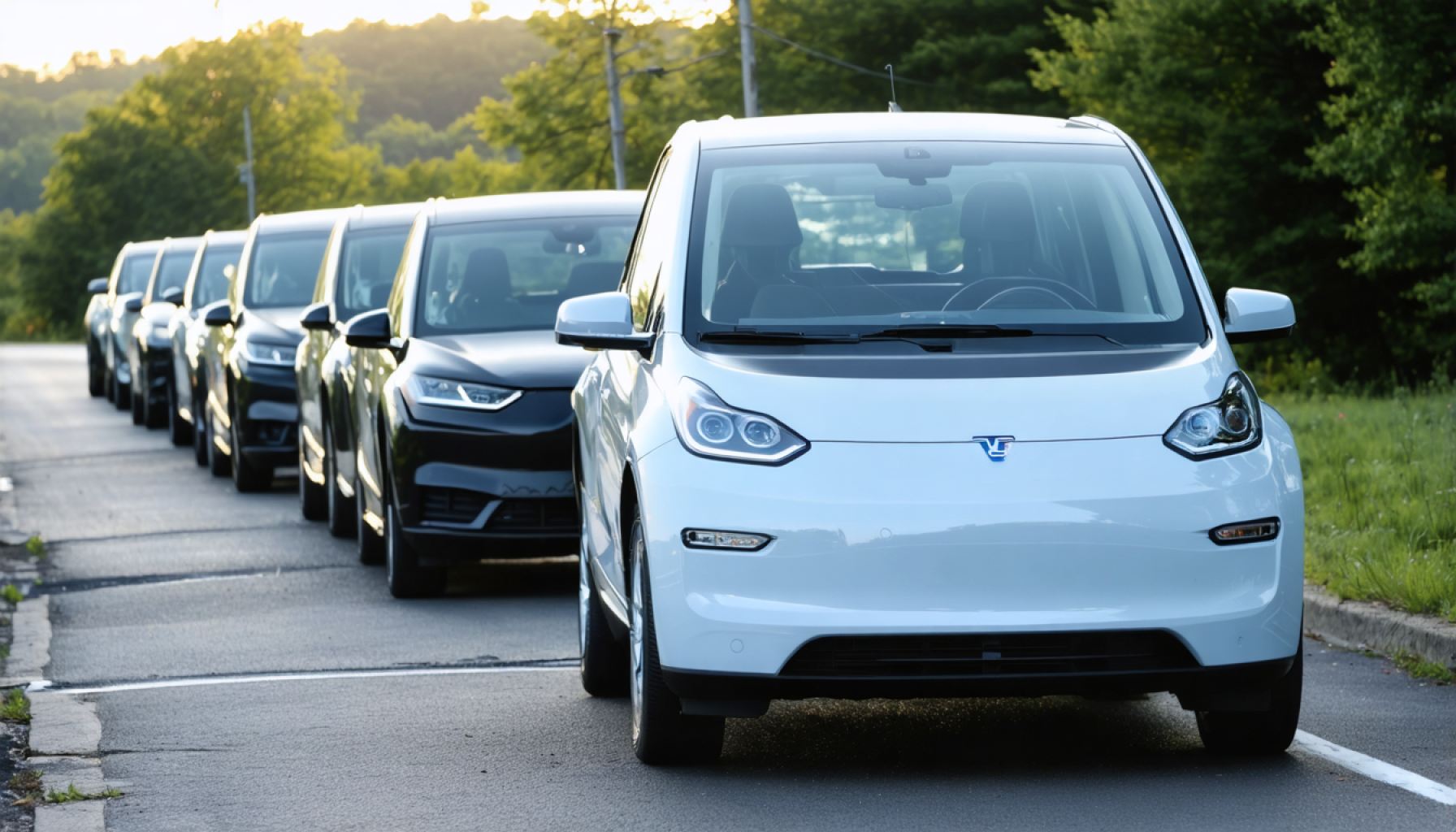- Virginia Clean Cities is driving a sustainability revolution in Southwest Virginia by promoting clean fuels and installing electric vehicle charging stations.
- This initiative, supported by the U.S. Department of Energy, targets underserved “charging deserts” to enhance accessibility for electric vehicle owners.
- Local businesses and town officials are encouraged to participate, transforming communities into eco-friendly hubs and boosting economic growth.
- New infrastructure projects promise to invigorate local markets and attract environmentally conscious visitors, creating economic opportunities.
- The program calls for community involvement to contribute to cleaner air and a sustainable future, making change as simple as a phone call.
A quiet revolution is unfolding in the rolling hills of Southwest Virginia, where the push for cleaner air and robust economic growth gains momentum.
A beacon of hope in this transformation is Virginia Clean Cities, now extending its efforts to weave sustainability into the fabric of these communities. Born out of the U.S. Department of Energy’s vision in 1996, the program has steadily championed the cause of clean fuels across the state. But now, its gaze firmly sets on the region’s sprawling landscapes, often described as “charging deserts” for electric vehicle users.
Picture a network of sleek charging stations, each a promise of connection, blossoming across towns and city centers. Virginia Clean Cities is on a mission to turn this vision into reality, generously offering chargers to spots crying out for them. Local businesses and town officials are invited to join this green crusade, transforming their communities into accessible havens for electric vehicle owners.
This initiative promises more than just reduced emissions. It offers invaluable economic opportunities, energizing local markets with new infrastructure projects and attracting eco-conscious visitors.
With a few strategic moves, Southwest Virginia stands on the cusp of a cleaner, greener future, ready to reclaim its skies while spurring economic revival. It’s an irresistible call to action: be a part of this wave and watch as your community takes a giant leap toward sustainability.
Taking part is simple; the opportunity to fuel change is a phone call away. Let’s remake the landscape, one charger at a time, and ride this tide of transformation to a brighter, electrifying future.
The Revolutionary Rise of Electric Vehicle Charging Infrastructure in Southwest Virginia
A Sustainable Transformation in Southwest Virginia
The emergence of a clean energy revolution in Southwest Virginia is a transformative opportunity for the region, spearheaded by the efforts of Virginia Clean Cities. This initiative, born from the U.S. Department of Energy’s vision, aims to combat the area’s status as “charging deserts” for electric vehicles (EVs) by deploying a network of electric vehicle charging stations.
How-To Steps & Life Hacks for Communities
1. Identify Strategic Locations: Communities should assess where the influx of EV chargers could have the most significant impact, focusing on downtown areas, near popular attractions, or along major thoroughfares.
2. Engage Local Stakeholders: Collaboration with local businesses, government agencies, and community leaders is essential to establish support and gain momentum for charging infrastructure projects.
3. Access Funding and Grants: Virginia Clean Cities provides resources that can assist in securing funding from federal and state grants designed to promote clean energy infrastructure.
4. Promote Awareness and Education: Host community events to educate the public about the benefits of electric vehicles and new charging infrastructure, encouraging wider adoption.
5. Monitor and Evaluate: Implement systems to track usage and performance of charging stations to ensure they meet community needs and can adapt to future demand.
Real-World Use Cases
– Tourism Boost: By providing EV charging infrastructure, regions can attract eco-conscious travelers, boosting local tourism and bringing additional revenue to local businesses.
– Improved Air Quality: Reduced vehicle emissions improve community health outcomes, benefiting public health and lowering healthcare costs.
– Job Creation: Developing and maintaining EV infrastructure offers new job opportunities in construction, technology, and maintenance sectors.
Reviews & Comparisons
Consumers often face challenges deciding between different types of EV chargers. Generally, the comparison revolves around three categories: Level 1 (120V), Level 2 (240V), and DC Fast Charging (480V). While Level 1 offers basic refueling capabilities, Level 2 is preferable for its faster charging speeds, suitable for most locations. DC Fast Charging is ideal for high-traffic areas where quick turnaround is critical.
Controversies & Limitations
– Initial Investment Costs: Despite long-term savings and environmental benefits, the initial investment in infrastructure can be high.
– Unequal Access: Rural and economically disadvantaged communities may experience slower deployment than urban centers, necessitating focused government support and intervention.
Market Forecasts & Industry Trends
The electric vehicle industry is expected to grow substantially, with analysts predicting the global EV market to expand at a CAGR of 29% over the next decade. This growth will drive increased demand for charging infrastructure, presenting lucrative opportunities for investment and industry growth.
Recommendations for Immediate Application
– Start Small but Plan Big: Roll out initial charging stations with scalable plans, ensuring ease of expansion as demand grows.
– Partner with Tech Companies: Engaging with technology firms can help drive innovation in charging solutions, offering smarter, cost-effective options.
– Incentivize EV Adoption: Offering community incentives for EV purchases can accelerate uptake, encouraging infrastructure use.
Suggested Related Links
– Department of Energy
– Drive Electric
– Virginia Clean Cities
By embracing these actionable strategies, communities across Southwest Virginia have the opportunity to lead a clean energy revolution, transforming the landscape into an electrifying, sustainable future one charger at a time.














